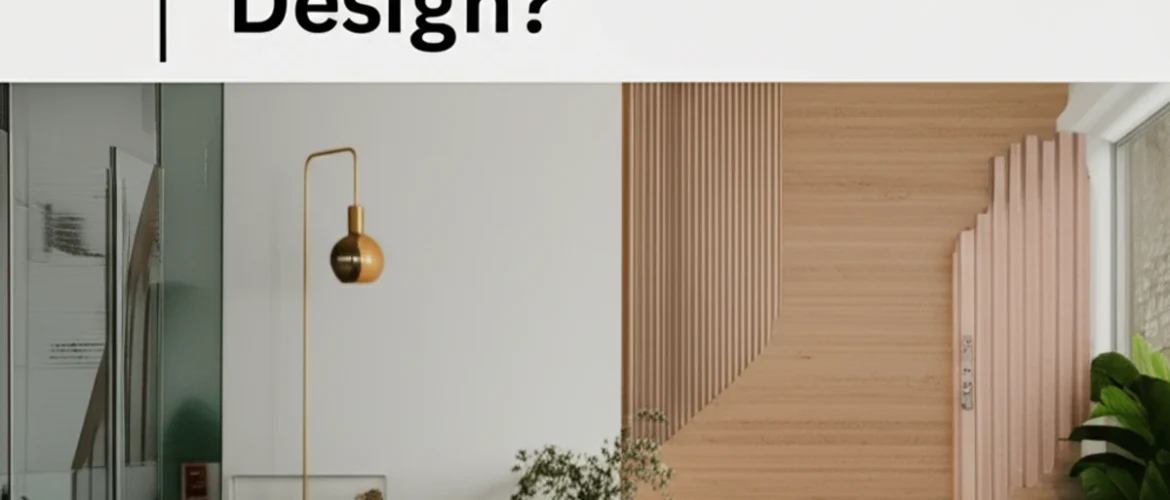Blog
What Is the 3-5-7 Rule in Interior Design? | Maya School of Designs
- October 1, 2025
- Posted by: admin
- Category: Blog Interior Design

Interior Design Unlocking Design Harmony: What Is the 3-5-7 Rule in Interior Design? | Maya School of Designs
Have you ever walked into a room and it just… *felt* right? Not overly decorated, not sparse, but simply balanced, cohesive, and inviting? It’s like a secret symphony of elements playing in perfect harmony, often without you even realizing why. As a passionate blogger dedicated to demystifying the art of interior design, I’m thrilled to share one of those “aha!” moments that transformed my own approach to creating beautiful spaces: the powerful yet simple 3-5-7 rule in interior design.
This isn’t some ancient, obscure secret, but rather a flexible guideline, a guiding star for students, beginners, and design enthusiasts alike, that helps you craft spaces with intentional depth and visual interest. Forget overwhelming complexities; the 3-5-7 rule simplifies the process, giving you a framework to build upon, making your design journey not just easier, but infinitely more rewarding. Let’s dive into how this elegant principle can revolutionize your interior design techniques.
Ever Wonder How Designers Make a Room *Feel* Right?
We all have an innate desire for balance and rhythm in our surroundings. A room that feels “off” can be subtly unsettling, perhaps too chaotic or too bland. Before I truly grasped structured interior design techniques, I remember struggling with a living room that felt perpetually “flat.” I’d add items, take them away, rearrange furniture, but it never quite clicked. It lacked that layered richness, that sense of a story unfolding within the space. Sound familiar?
That’s where the beauty of a simple framework comes in. The 3-5-7 rule isn’t about rigid adherence; it’s about providing a roadmap for achieving visual equilibrium and compelling narrative. It’s one of those interior design tips that, once you learn it, you’ll start seeing its application everywhere – from magazine spreads to your favorite cafes. It helps you articulate why a particular arrangement works so well, empowering you to replicate that magic in your own projects.
Unpacking the Magic: What Exactly is the 3-5-7 Rule?
At its heart, the 3-5-7 rule in interior design is a guideline for grouping objects, distributing colors, and layering textures within a space or a specific vignette. It encourages you to think in odd numbers and varying quantities to create dynamic, engaging compositions rather than static, predictable ones. Think of it as building layers, each number representing a different level of prominence and contribution to the overall design story.
Let’s break down each mystical number:
* The Power of Three: This is your primary anchor, the foundational layer. When grouping objects, start with three key pieces. These should be your largest, most dominant, or most impactful elements. In terms of color, these might be your main base colors that define the room’s overarching palette. For textures, think of three primary materials that set the tone. These three elements are the sturdy pillars upon which your design rests, providing immediate visual weight and definition.
* Adding Depth with Five: The number five introduces your secondary elements, adding support and complementing the main three. These are items that elaborate on your primary story, bringing in additional layers of interest without competing for dominance. If we’re talking about color, these are your secondary hues that add subtle contrast or variation. For objects, these could be slightly smaller pieces that build around your core three. The five elements provide a crucial transition, enriching the scene without overwhelming it.
* The Sparkle of Seven: Here’s where the magic truly comes alive – your accent pieces. Seven elements are typically your smallest, most detailed, or most surprising additions. These are the “jewels” of the room, adding pops of unexpected color, intricate textures, or whimsical forms. They provide the final flourish, the delightful details that catch the eye and make a space feel complete and curated. These aren’t just filler; they are the intentional sparks that elevate the design from good to truly memorable.
Beyond the Numbers: How to Apply the 3-5-7 Rule to Color Palettes
Translating the 3-5-7 rule into a color scheme is one of the most impactful interior design techniques you can master. Imagine your living room as a canvas awaiting its chromatic personality. Instead of randomly picking colors, use this rule to build a harmonious and dynamic palette.
Start with three dominant colors. These will form the backbone of your room – perhaps a neutral wall color, a primary furniture upholstery shade, and a main accent color (think 60/30/10 rule applied with a twist). Then, introduce five secondary hues that beautifully complement these three. These might be lighter or darker variations of your main colors, or even entirely new but harmonious shades found in textiles, rugs, or larger decorative items. Finally, weave in seven delightful accent colors through smaller items like throw pillows, vases, artwork, or even book spines. These pops of color are often where you can be most adventurous, adding unexpected vibrancy or subtle intrigue. It’s this meticulous layering that prevents a room from feeling monotonous or chaotic, allowing each color to play its part in the visual symphony.
Texture & Form: Weaving Depth with the 3-5-7 Rule
The 3-5-7 rule isn’t just for grouping objects or choosing colors; it’s an indispensable guide for layering textures and varying forms. A room devoid of textural variation can feel flat and sterile, while one with too many competing textures can feel chaotic. This is where truly refined interior design techniques come into play.
Consider starting with three primary textures that anchor your space – perhaps a smooth, polished wood floor, a soft, plush rug, and the crisp linen of your sofa. Then, introduce five complementary textures. This could be the rugged weave of a throw blanket, the cool, hard surface of a ceramic vase, the natural grain of a rattan basket, or the sleek metal of a lamp. Finally, scatter seven accent textures that delight the senses. Think a tiny velvet cushion, the delicate pattern of a sheer curtain, a glimmering metallic sculpture, or the subtle unevenness of a handcrafted pottery piece. By intentionally varying smooth and rough, soft and hard, matte and glossy, you create a tactile richness that invites touch and visually stimulates, preventing your space from feeling one-dimensional. The same applies to forms – varying between linear, curved, and organic shapes will add a compelling visual rhythm to your design.
Accessorizing Like a Pro: The 3-5-7 Rule for Decor
When it comes to accessorizing, the 3-5-7 rule truly shines, helping you move beyond clutter to create curated, meaningful displays. This is where many beginners falter, unsure how to arrange collections or style surfaces. With these interior design tips, you’ll be styling like a seasoned professional.
Let’s imagine styling a bookshelf or a coffee table. Start with a group of three primary items. On a bookshelf, this might be a stack of substantial books, a large decorative object, and a framed photo. Then, add five secondary items that complement these. Perhaps smaller bookends, a unique figurine, and a couple of interesting paperweights. Finally, sprinkle in seven delicate accent pieces – tiny succulents, a beautifully designed coaster, a small personal memento, or a decorative bead strand. This thoughtful layering ensures that each item has space to breathe and contribute to the overall aesthetic, preventing your surfaces from looking like a cluttered afterthought. The result is a display that feels collected, balanced, and tells a story, rather than just being a collection of random items.
Your Design Journey Begins: Mastering the 3-5-7 Rule at Maya School of Designs
The 3-5-7 rule in interior design is more than just a guideline; it’s a way of seeing. It trains your eye to identify balance, harmony, and intentionality in any space. For students, beginners, and design enthusiasts, it’s one of the most foundational interior design techniques you can embrace, providing a springboard for more advanced explorations.
Don’t be afraid to experiment with these interior design tips! Play with different groupings, swap out colors, and feel the difference that thoughtful layering makes. The beauty of design lies in its iterative nature, in the journey of discovery. At Maya School of Designs, we believe in empowering aspiring designers with practical, applicable knowledge like the 3-5-7 rule, giving you the confidence to transform any space into a beautiful, functional masterpiece. So, go forth, count your threes, fives, and sevens, and watch your designs come alive!
